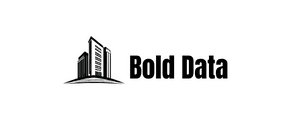Tracking: Heatmaps are visual representations that highlight where users are clicking, scrolling, and spending the most time on a webpage. The “hotter” areas are where user interactions are concentrated, offering insights into which elements are attracting attention. 2. User Behavior Tracking: User behavior tracking involves monitoring and analyzing the actions users take on a website. This includes tracking click patterns, scroll depth, navigation paths, and interactions with various elements. How They Contribute to CRO Efforts: 1. Visual Insights: Heatmaps provide a clear visual representation of user interactions. They allow businesses to quickly identify which parts of a webpage are engaging users and which are being ignored. 2. Identifying Click Patterns: By analyzing click heatmaps, businesses can identify which links, buttons, or CTAs users are clicking on the most. This insight helps optimize the placement and design of key conversion elements. 3. Scroll Depth Analysis: Scroll heatmaps.
Show how far users are scrolling down a page
This information can guide content placement, ensuring important information is visible without excessive scrolling. 4. Uncovering Dead Zones: Cold or less-engaged areas on heatmaps reveal sections that users aren’t interacting with. This can help businesses identify and Jewelry Photo Retouching optimize underperforming content or elements. 5. Form Analysis: Heatmaps can reveal user behavior within forms, such as drop-off points and fields that are frequently left blank. This insight is crucial for optimizing forms and  Service reducing friction. 6. Real-Time Insights: User behavior tracking provides real-time insights into how users are navigating through a website. This enables businesses to make immediate adjustments if they notice any patterns of frustration or confusion. 7. Data-Driven Decision-Making: Both heatmaps and user behavior tracking offer objective data that informs CRO efforts. Businesses can make informed decisions based on actual user behavior rather than assumptions. 8. Tailored User Experience: Insights from heatmaps and.
Service reducing friction. 6. Real-Time Insights: User behavior tracking provides real-time insights into how users are navigating through a website. This enables businesses to make immediate adjustments if they notice any patterns of frustration or confusion. 7. Data-Driven Decision-Making: Both heatmaps and user behavior tracking offer objective data that informs CRO efforts. Businesses can make informed decisions based on actual user behavior rather than assumptions. 8. Tailored User Experience: Insights from heatmaps and.
User behavior tracking allow businesses
So tailor their user experiences. This includes optimizing page layouts, adjusting content placement, and enhancing navigation. 9. A/B Testing and Iterative Improvement: Heatmaps and user behavior tracking can inform A/B testing strategies. Businesses can use data to formulate hypotheses and test different versions of web pages to determine which elements drive better results. 10. User-Centric Optimization: Ultimately, both tools contribute to a user-centric optimization approach. By understanding how users interact with a website, businesses can create an environment that meets their needs, reduces friction, and encourages conversions. which Bold Data businesses can view user interactions and behaviors on their websites. These tools provide insights that guide CRO efforts, inform optimization strategies, and enhance user experiences. By harnessing the power of data-driven insights, businesses can create an environment that resonates with their audience, boosts engagement, and ultimately drives higher conversion rates.






